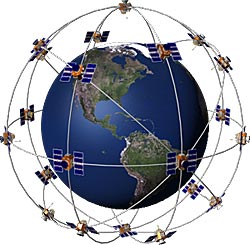1. Take a picture of Barbie in the car and out of the car.
2. Measure Mu of the floor and your Barbie system by using the force probe over by the printer.
3. Measure the angle of the ramp used to accelerate Barbie.
4. You will run Barbie down the ramp 3 times
- for time #1, use the logger pro and create a distance graph as Barbie comes down the ramp, but before the vehicle crashes. Print the graph and the data table. Mark the starting point with a piece of tape
- Attach an accelerometer to Barbie's lap and to the front of the vehicle, just inside the red lip of the cart. Run the car with the front Bumper. Print the graphs and the data table.
- Repeat, but this time, use the back Bumper. Barbie will be facing uphill in this trial. Again, print the graphs and the data table.
5. Draw a force diagram for Barbie on the hill (break down the Force normal and the Force down the hill using a scaled diagram or trig). Calculate MU of the board.
6. Draw a force diagram for Barbie on the floor. Label F(f), Force(weight), Force(normal), and F(net). Show calculations for F(applied)
7. Calculate how many g-forces Barbie had acting on her by dividing the accelerometer value by 9.8, the value of 1 g.
1) Vertical axis g-force:
a) positive: untrained: 5 g; trained, with special suit: 9 g
b) negative (drive blood to the head): - 3 g
c) instantaneous: 40 g
d) deadly: 100 g (record: 179 g)
2) Horizontal axis g-force
"The human body is considerably more able to survive g-forces that are perpendicular to the spine."
Untrained humans:
a) pushing the body backwards: 17 g
b) pushing the body forwards: 12 g
3) "Strongest g-forces survived by humans
Voluntarily: Colonel John Stapp in 1954 sustained 46.2 g in a rocket sled, while conducting research on the effects of human deceleration.
Involuntarily: Formula One racing car driver David Purley survived an estimated 179.8 g in 1977 when he decelerated from 173 km·h−1 (108 mph) to 0 in a distance of 66 cm (26 inches) after his throttle got stuck wide open and he hit a wall."
Source for all quotes and further information:
http://en.wikipedia.org/wiki/G-force
a) positive: untrained: 5 g; trained, with special suit: 9 g
b) negative (drive blood to the head): - 3 g
c) instantaneous: 40 g
d) deadly: 100 g (record: 179 g)
2) Horizontal axis g-force
"The human body is considerably more able to survive g-forces that are perpendicular to the spine."
Untrained humans:
a) pushing the body backwards: 17 g
b) pushing the body forwards: 12 g
3) "Strongest g-forces survived by humans
Voluntarily: Colonel John Stapp in 1954 sustained 46.2 g in a rocket sled, while conducting research on the effects of human deceleration.
Involuntarily: Formula One racing car driver David Purley survived an estimated 179.8 g in 1977 when he decelerated from 173 km·h−1 (108 mph) to 0 in a distance of 66 cm (26 inches) after his throttle got stuck wide open and he hit a wall."
Source for all quotes and further information:
http://en.wikipedia.org/wiki/G-force
Analysis:
Write a group report. Different people can do different parts, but I should see evidence of everyone's efforts in the process.
- Which bumper worked better? How do you know?
- What does your calculation of MU look like on the floor and on the hill? (you may want to take pictures of your work and upload)
- Explain your design process and seat belt.
- Does Barbie survive your collisions?
- What was the effect of the roll-cage? Could you simulate something with our equipment to show this?
- What have you learned?



